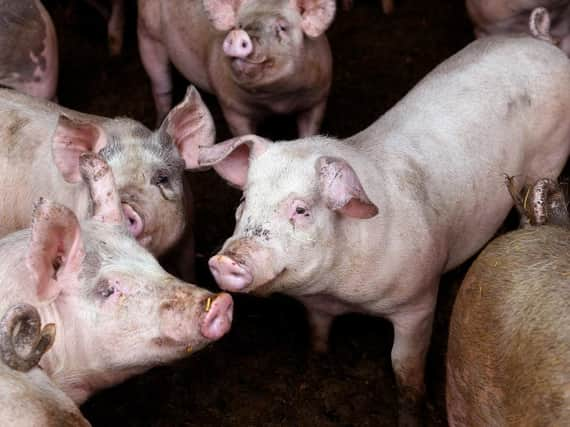CO2 shortage: How is CO2 used to stun pigs? Is it humane? The RSPCA explains


CO2 is a by-product of fertilisers and due to a surge in wholesale gas prices, two large fertiliser plants in Teesside and Cheshire, owned by US manufacturer CF Industries, have had to close down. This has cut 60 per cent of the UK’s carbon dioxide supply.
The crisis could impact the supply chain of meat and poultry, particularly with pigs as CO2 is a method used to stun them before they are brought to the slaughter.
How is CO2 used to stun pigs?
Advertisement
Hide AdAdvertisement
Hide AdThe gas is used for a more ‘humane’ method of slaughtering the pigs. They are taken into a CO2 chamber.
As the effects of CO2 are reversible, the time between stunning them and them being drained of their bodily fluids should be quick so they don’t regain consciousness before the slaughtering begins.
Researchers found that exposing the animals to 90 per cent of carbon dioxide for 120 seconds is the most effective process.
Around six of them are brought into the chamber at a time and they are usually loaded into an elevator which consists of compartments that move slowly down into the highly concentrated CO2 gas. Their bodies must be drained within 15 seconds of their exposure to the gas before they regain their consciousness.
Is this method humane?
Advertisement
Hide AdAdvertisement
Hide AdAccording to the RSPCA, the use of CO2 gas is currently one of the most humane commercially available methods.
While using CO2 gas is one of the most humane techniques, there is an alternative method.
An RSPCA spokesperson said: “Using CO2 gas systems reduces the amount the animals need to be handled by people, which can be very stressful for them.
“The use of CO2 systems also offers a more consistent and controlled process and reduces the risk of human error.
Advertisement
Hide AdAdvertisement
Hide Ad“However, electrical stunning can offer an alternative option for stunning animals, and if properly applied, can result in swift unconsciousness.”
A team of scientists working with the RSPCA is always looking for new ways to further improve the welfare of farm animals and urges for development of more humane methods, the RSPCA said.
“Currently, CO2 gas or electric stunning are the only widely-used commercially available methods so more research and in particular, development, is needed in this area so more humane alternatives can be brought into use,” the spokesperson added
The RSPCA is very concerned by the CO2 shortages and have already received reports that there is very little supply left.
Advertisement
Hide AdAdvertisement
Hide AdThe organisation has urged the government to work with the farming community to find a solution to the problem.
“Any delay in getting this problem resolved will cause suffering on a huge scale, as animals are left on farms and emergency on-farm culling may be required,” the spokesperson said.
“Our hope is that the government will act quickly to identify and prioritise additional supplies for slaughterhouses to avoid animal welfare problems.
“There is the potential for the perfect storm of pigs suffering here with shortages of gas, animal feed, lorry drivers and slaughterhouse workers.
Advertisement
Hide AdAdvertisement
Hide Ad“Urgent action is needed today but this should also prompt us to be looking more closely at the ‘machinery’ of farming that we have created, and how we can ensure our husbandry systems are more robust and protect the welfare of animals when issues like this emerge.”
Comment Guidelines
National World encourages reader discussion on our stories. User feedback, insights and back-and-forth exchanges add a rich layer of context to reporting. Please review our Community Guidelines before commenting.